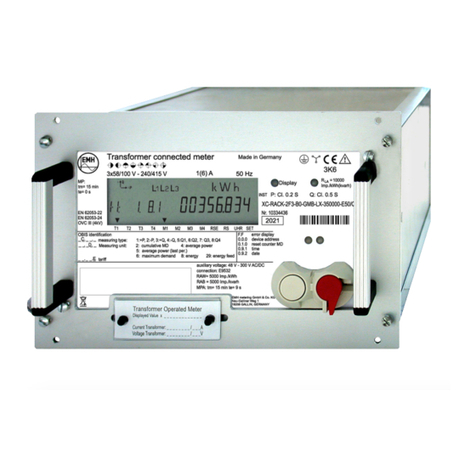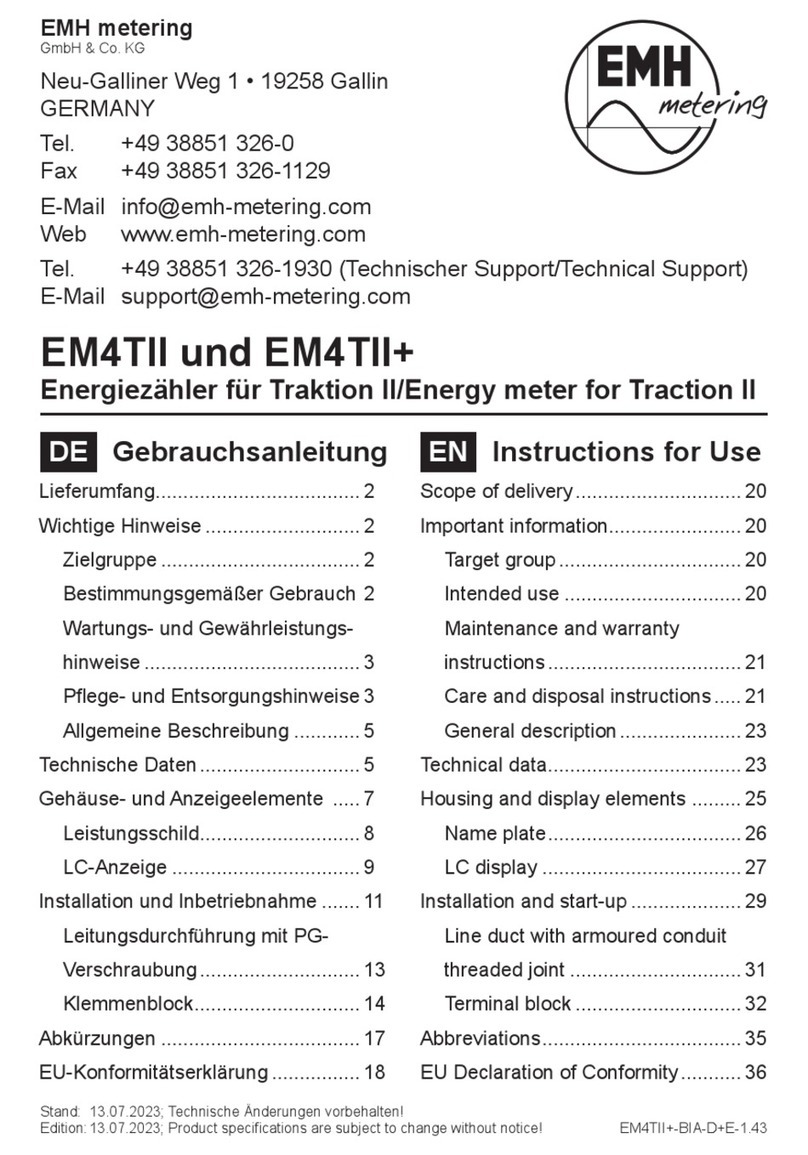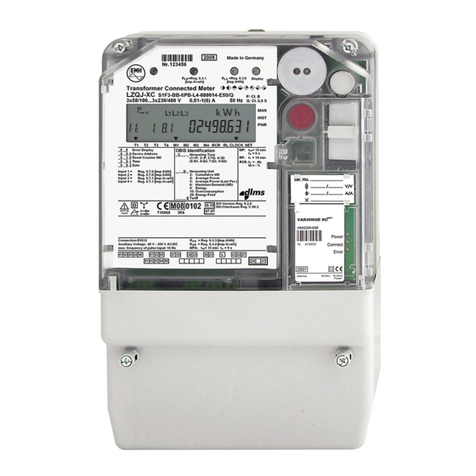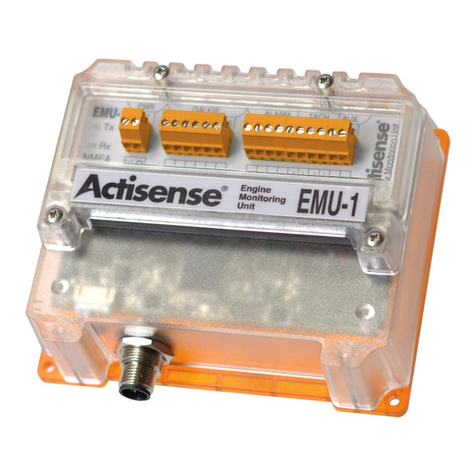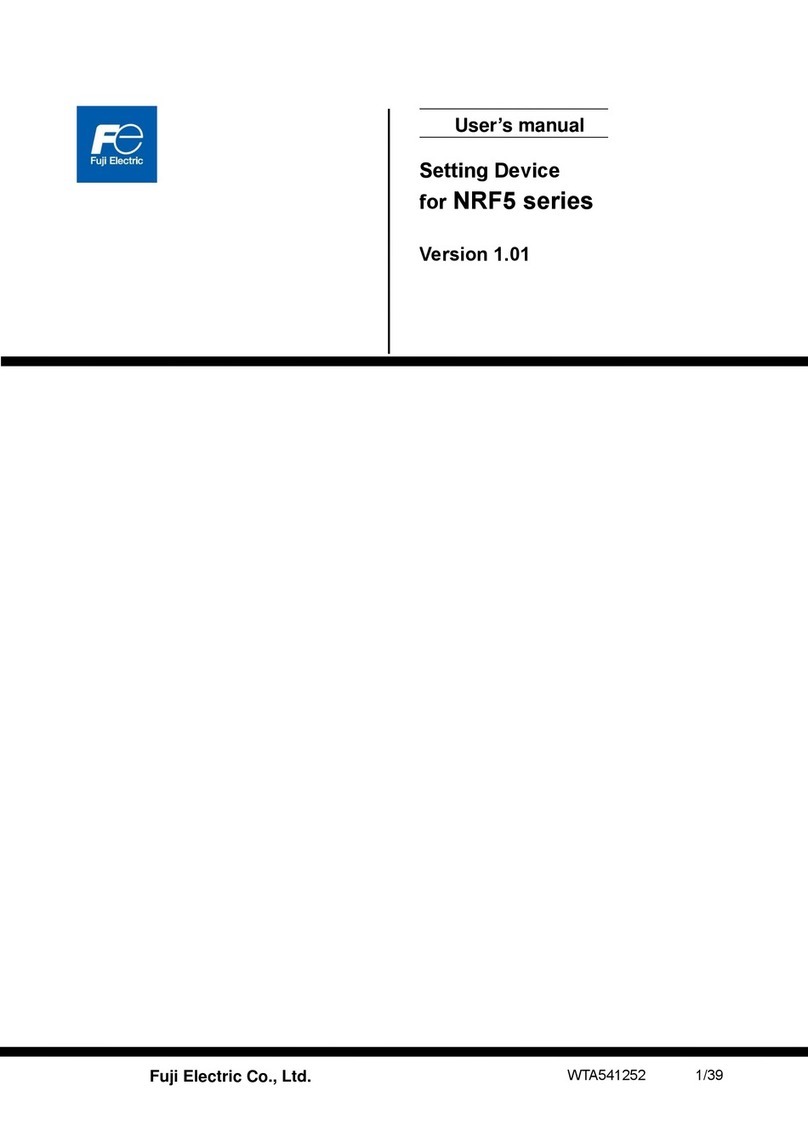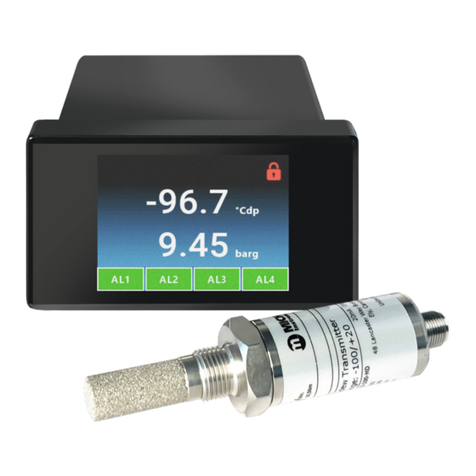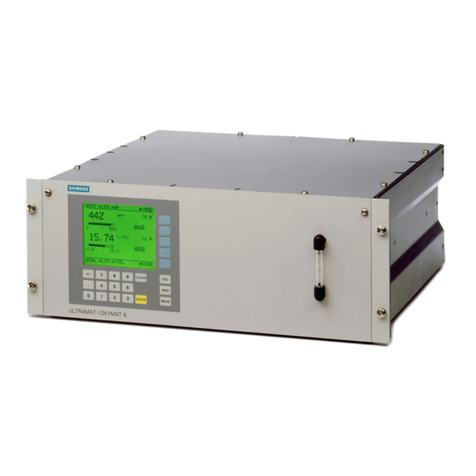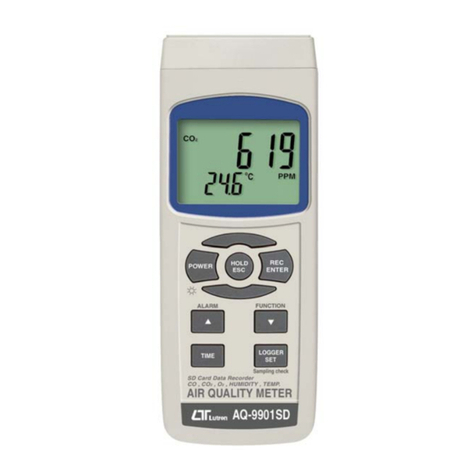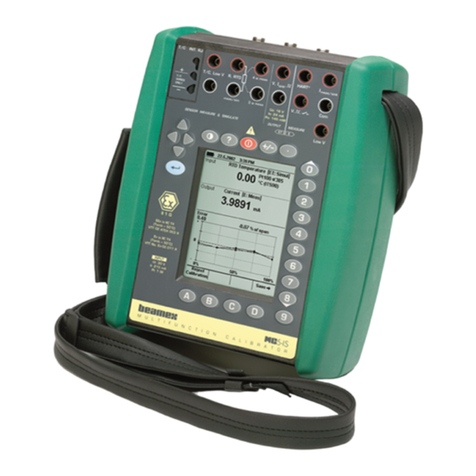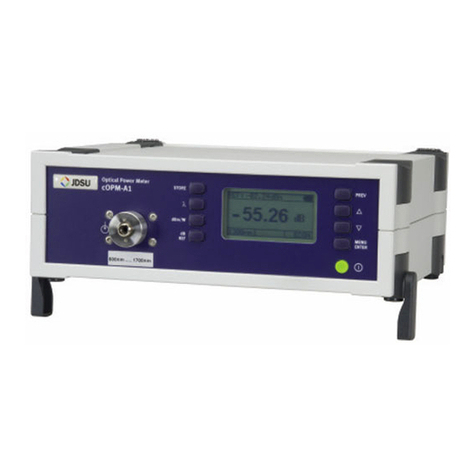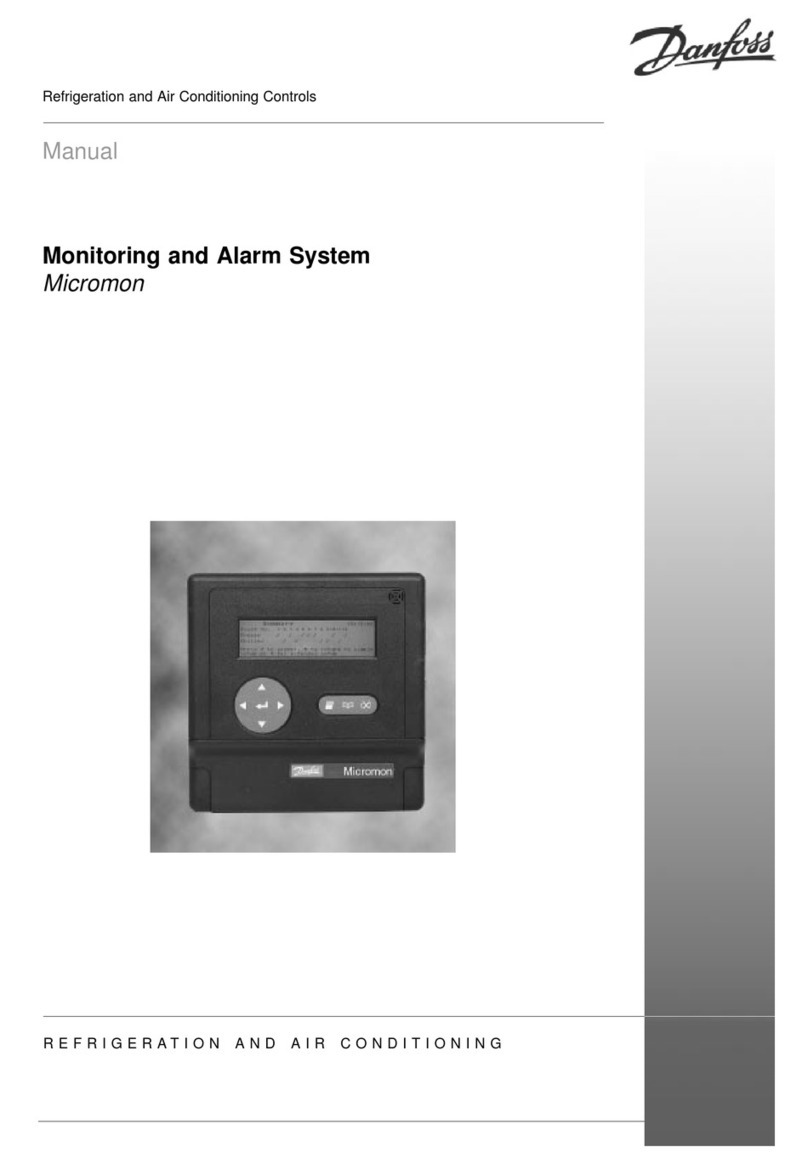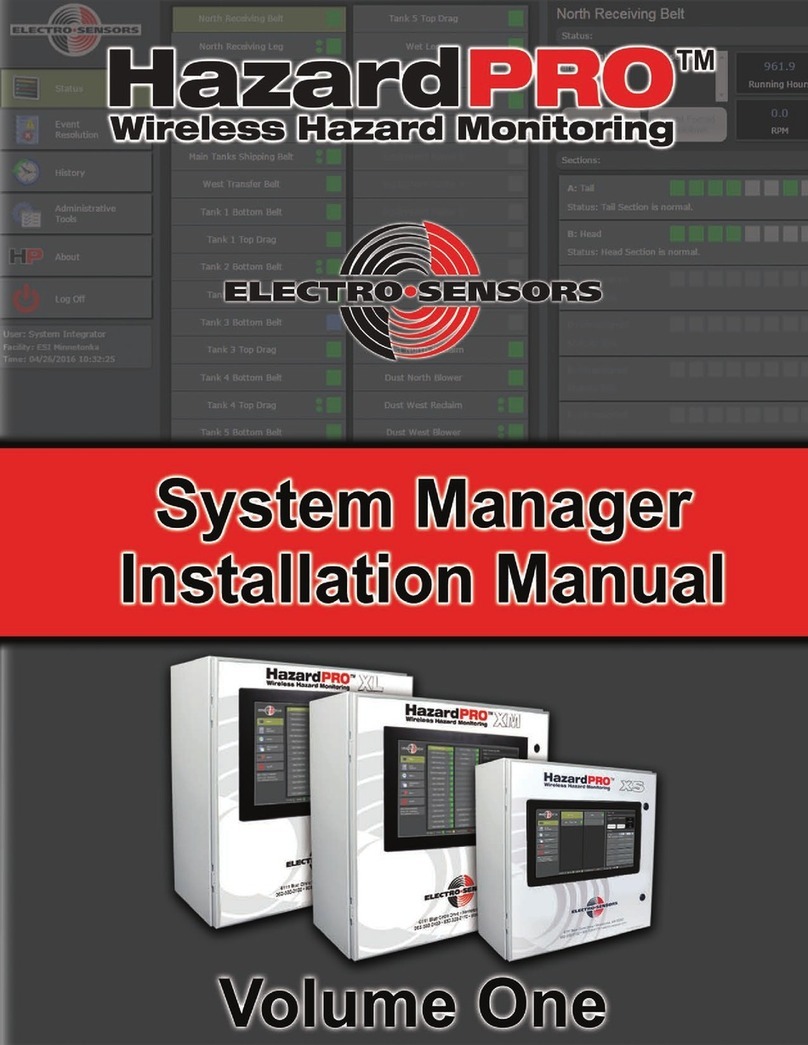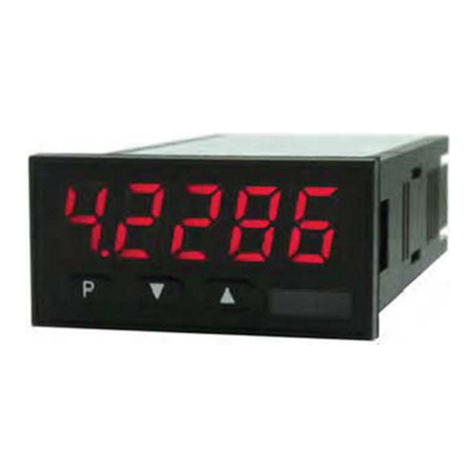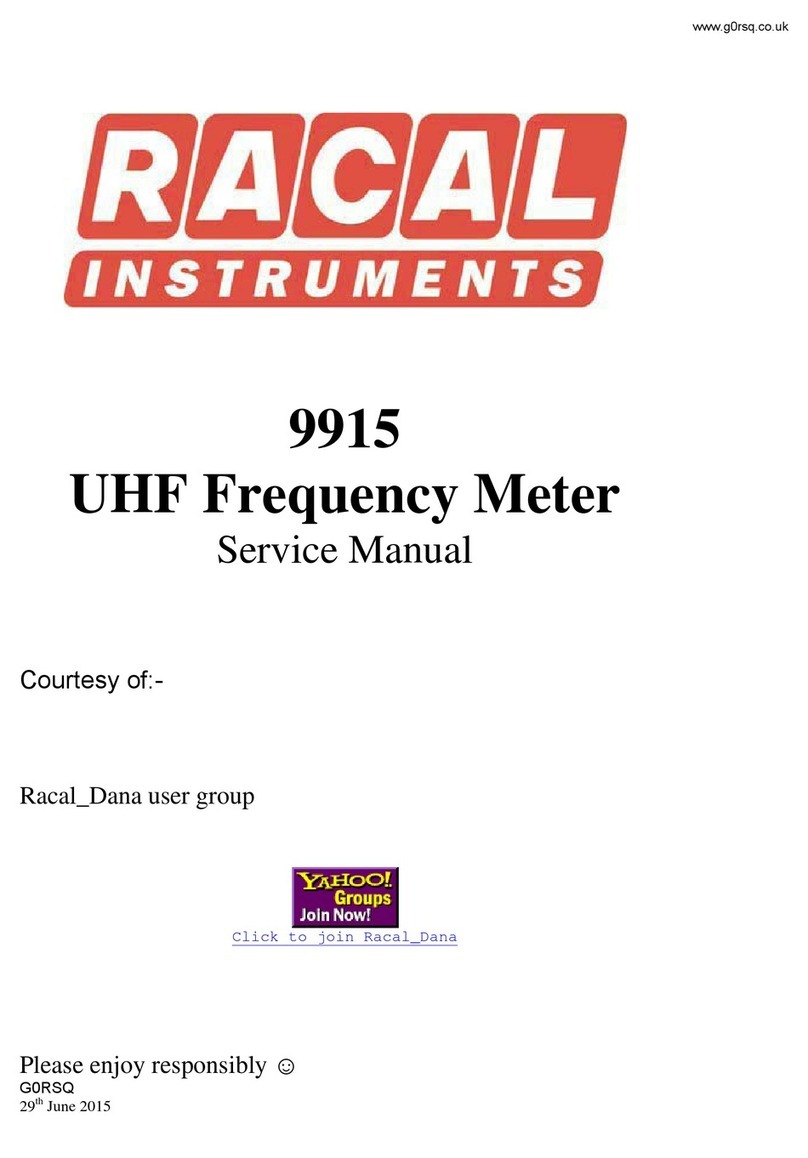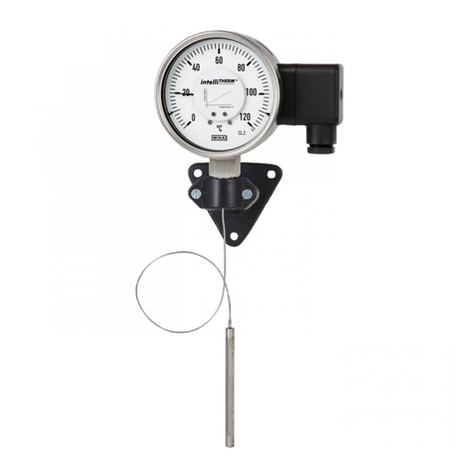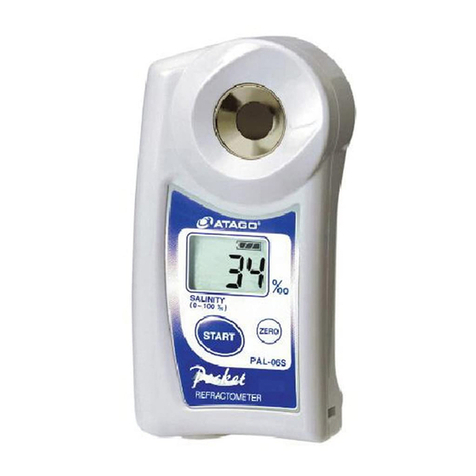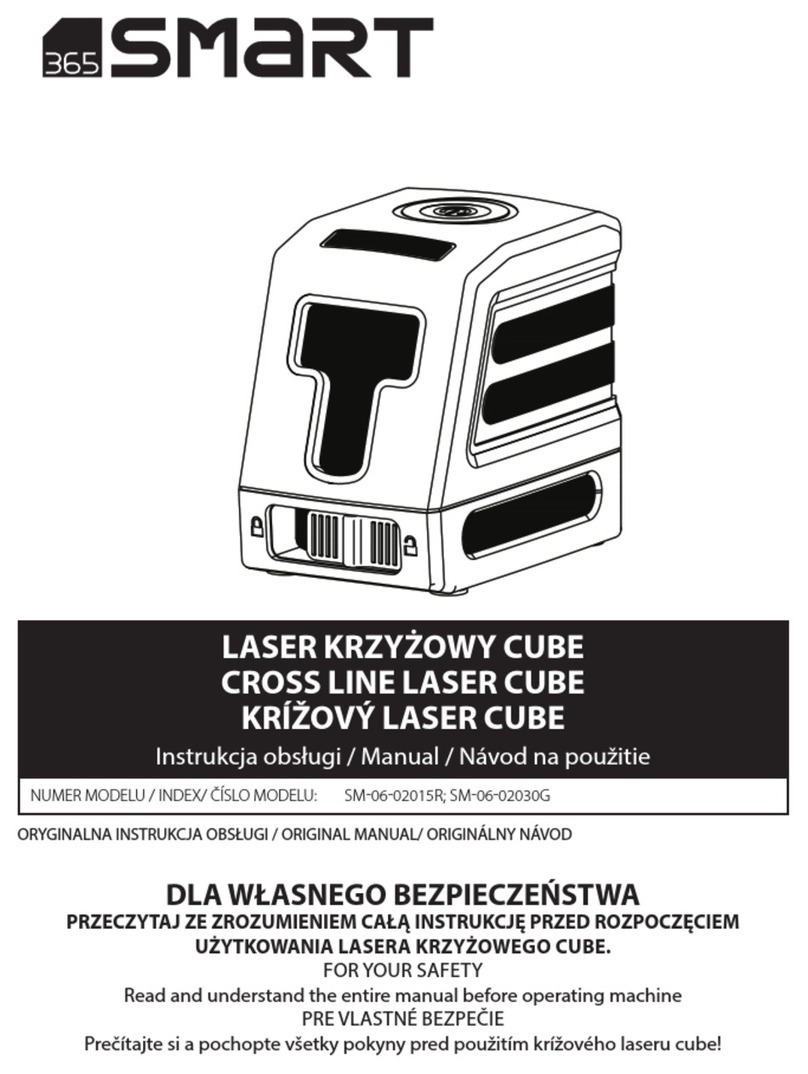EMH metering NXT4 User manual

EMH metering
GmbH & Co. KG
Neu-Galliner Weg 1 • 19258 Gallin
GERMANY
Tel. +49 38851 326-0
Fax +49 38851 326-1129
Web www.emh-metering.com
Tel. +49 38851 326-1930 (Technical Support)
Email [email protected]
Instructions for use
NXT4
Polyphase meter for commercial, industrial and
extended domestic applications
EN
Version: November 2020; Subject to technical changes
Scope of delivery............................................................................................... 2
Important information......................................................................................... 2
Target group .................................................................................................. 2
Intended use.................................................................................................. 2
Maintenance and warranty instructions......................................................... 3
Care and disposal information....................................................................... 3
Basic safety instructions................................................................................ 4
General description ........................................................................................... 4
Technical data.................................................................................................... 5
Housing, display and control elements.............................................................. 6
Name plate.................................................................................................... 7
LC display...................................................................................................... 8
Installation and start-up ................................................................................... 10
Mounting the meter ..................................................................................... 10
Connecting the meter.................................................................................. 12
Terminal blocks............................................................................................ 14
Readout battery (accessory) ....................................................................... 19
Terminal cover ............................................................................................. 19
Abbreviations................................................................................................... 20
EU Declaration of Conformity.......................................................................... 22
NXT4-BIA-E-1.81

2
Scope of delivery
Please check the contents of the packing box are complete before
starting with the installation and start-up procedure.
y1 NXT4 device
y1 Instructions for use
yAccessory (optional):
• Readout battery
• Path separator
If the contents are incomplete or damaged, please contact your supplier.
Store, use and transport the device in such a way that it is protected
against moisture, dirt and damage.
Important information
These instructions for use are part of the documentation. These
instructions list all the dierent device versions. Some of the features
described herein may not be applicable for your particular device.
More comprehensive information about the device is available
in the product manual. Please also observe all the documents
included with other components.
Target group
These instructions are intended for technicians who are responsible
for the installation, connection and servicing of the devices. The device
may only be installed and started up by qualied electricians in accord-
ance with the generally accepted technology standards and, where
applicable, the denitive regulations governing the erection of communi-
cation equipment and terminal devices.
Intended use
The meter is intended to be used solely for the measurement of electri-
cal energy, and it must not be operated outside the specied technical
data (see name plate).

3
Maintenance and warranty instructions
The device requires zero maintenance. It is not permitted to make any
repairs in the event of any damage (e.g. due to transport, storage). If
the device is opened, the warranty will be rendered null and void.
The same applies where a defect is caused by external factors (e.g.
lightning, water, re, extreme temperatures and weather conditions), or
by improper or careless use or handling.
The seals may only be broken by authorized personnel.
Care and disposal information
Use a dry cloth to clean the device housing. Do not use any chemical
cleansing agents!
The following table names the components and how they are to be
treated at the end of their life cycle.
Components Waste collection and disposal
Printed circuit
boards
Electronic waste: Dispose of such waste in
accordance with the local regulations.
LEDs, LC
displays
Hazardous waste: Dispose of such waste in
accordance with the local regulations.
Metal parts Recyclable material: Collect this material and sort it
into separate metal containers.
Plastic parts Send sorted plastic parts to a recycling plant
(regranulation) or, where applicable, to a waste
incineration plant (thermal energy generation).
Batteries Take safety precautions against short circuits before
disposing of the batteries. Dispose of the batteries
in their original packaging or insulate the terminals.
Do not dispose of batteries with the domestic waste;
instead, observe the locally applicable waste and
environmental protection standards.

4
Basic safety instructions
Please adhere to the following basic safety instructions:
yRead all the enclosed instructions and information.
yObserve the warnings on the device and in the documents.
yAlways be aware of safety issues and hazards when working on the
device.
yThe customary local occupational health and safety regulations for
electrical installations must be observed during assembly, installation
and removal of the device.
yMake sure that the installation and operating location of the device
meets the specications in the technical data.
yBefore assembly, check the devices for any transport damage or
other externally visible damage.
yOnly use the device if it is in a technically awless state, and solely in
line with its intended use.
yThe connection cables used to connect a meter must be selected
to match the maximum load of the meter and the installation environ-
ment in terms of type, cross-section, voltage and temperature.
yAttach ferrules to exible wires.
yObserve the maintenance and warranty instructions.
yIf the mains power fails and then returns, there is no need to do
anything to the meter.
General description
The meter is used for measuring electrical variables in industrial and
commercial applications. It is available for indirect connection up to a
maximum of 20 A and for direct connection up to a maximum of 120 A.
The active energy is measured to an accuracy class of 1 S or 0.5 S.

5
Technical data
Voltage, current, frequen-
cy, utilisation category
See name plate
Overvoltage category
Rated peak withstand
voltage
OVC III (as per EN 62052-31)
4 kV (as per EN 62052-31)
Input
System voltage
58...277 V, 2 each
Output
Optocoupler MOSFET
Relay
58... 240 V AC/DC, 0.1 A
58... 240 V AC/DC, 2 A NO
Temperature range Dened operating range:
-25°C...+55°C
Limit for operation:
-40°C...+70°C
Limit for storage and transport:
-40°C...+70°C
Humidity Maximum 95%, non-condensing, as per
EN 62052-11, EN 50470-1 and EN 60068-2-30
Protection class II
Degree of protection Housing: IP 54
Connections: IP 31
Fire properties As per EN 62052-11
Environmental conditions Mechanical: M1 as per Measuring Instruments
Directive (2014/32/EU)
Electromagnetic: E2 as per Measuring Instru-
ments Directive (2014/32/EU)
Intended operating site: Interior as per
EN 50470-1
Weight Approx. 1.3 kg (with relay 1.7 kg)

6
Housing, display and control elements
1 - Meter cover sealing screw
2 - Reset button, sealable
3 - Call-up button
4 - Optical data interface D0, optical call-up button, left
5 - Test LEDs
6 - Space for transformer plate (for transformer connected meters only)
7 - Terminal cover, sealable
8 - Terminal cover sealing screw
9 - Meter cover, sealable
10 - LC display

7
Name plate
1 - Registered quadrants
2 - Overvoltage category
3 - Accuracy class
4 - Utilisation category
5 - Recess for test LEDs
6 - Product standard
7 - Assignment of inputs and outputs, interfaces
8 - Information about connection to meter, connection diagram
9 - Temperature class as per EN 60721-3-3
10 - Conformity and certication marking
11 - Safety and application information
12 - Voltage, current and frequency
13 - Type designation and type code
14 - Manufacturer’s address
15 - Serial number
16 - Year of construction

8
LC display
1. The operation display shows the energy direction that is currently
being measured by the meter (supply/draw of active power,
inductive/capacitive reactive power). If a load current is owing
through the meter, the energy direction arrow indicates which
quadrant is being used for the measurement, e.g.:
1st quadrant +P/+Q 3rd quadrant –P/–Q
2nd quadrant +P/+Q 4th quadrant +P/–Q
2. The battery status indicator shows the residual capacity of the
readout battery or the internal power reserve of the real time clock.
=
Full power, the real time clock is buered in this instance
= Power reserve run-down, readout battery is empty or not
available. In this instance, the real time clock cannot be
buered.
3. The communication display lights up permanently when the data
interface (optical or electrical) and the meter are communicating. It
ashes on and o when the parameterisation status is active.
4. The phase display indicates when individual phase voltages
are applied. All 3 symbols ash on and o when the rotating eld
is wrong.
5. The unit shown matches the type of energy being measured or the
measured value displayed.

9
6. The additional cursor eld displays the operating states for
the meter. The arrows indicate whether any manipulation or an
installation error was registered or if the power threshold was
exceeded.
MAN
The cursor is active where any manipulation of the terminal
cover, meter cover or any magnetic inuence is registered.
PWR1 The cursor is active if the rst dened power threshold in
the meter was exceeded.
PWR2
The cursor is active if the second dened power threshold
in the meter was exceeded.
7. The standard cursor eld displays the operating states for the
meter. The arrows indicate which tari and maximum meter are
active, and how the meter is being controlled (clock or ripple control
receiver).
T1 - T4
Tari information for energy. All activatable tari indexes
are denoted on the name plate.
M1 - M4
Tari information for power. All activatable power indexes
are denoted on the name plate.
TST The cursor is displayed if test mode is activated.
RL The cursor ashes on and o as long as a resetting
lock is active.
CLOCK The cursor is active when the internal device clock
actuates the tari meter.
SET The cursor is active when the meter is in the Set mode.
8. The value area displays the measured values.
9. The code area denes the measured values according to the OBIS
key. The display can show all six value groups.

10
Installation and start-up
The meter can be wall-mounted as per DIN 43857-2.
The following gures show the relevant dimensions for mounting the
meter, depending on the model involved.
Mounting the meter
a) Meter with short terminal cover
Dimensions in mm

11
b) Meter with long terminal cover
Dimensions in mm
c) Meter with VARIOMOD NXT meter modem
Dimensions in mm

12
Connecting the meter
DANGER!
Risk of fatal injury in case of contact with live parts!
During installation or when replacing the meter, the wires connected to
the meter must be de-energised.
yRemove the corresponding pre-fuses and store them in a secure
location to ensure that no-one else can insert the pre-fuses again
without being noticed.
yIf you use selective automatic circuit breakers for system discon-
nection, secure them to prevent them from being switched-on again
without being noticed.
yBefore the installation of a meter, make sure that the consequences
of disconnecting the electrical system will not result in immediate
danger to the life or health of persons or cause any economic
damage.
yTo avoid any immediate hazards or damage, take appropriate
measures to prevent malfunctions before disconnection of the
system.
yDo not use the internal disconnection relay as a load disconnecting
switch when disconnecting electrical systems.
yUse the specied screw-type terminals only for installation and
connection of the meter.
yRoute the connection cables in the vicinity of the meter connection
terminals in such a way that they are not kinked or jammed when
the terminal cover is tted into place.
DANGER!
Risk of fatal injury due to arcing and electric shock!
The voltage taps in the meter are not fuse-protected, and are connect-
ed directly to the main voltage.
yExternal devices that are operated using the meter’s voltage taps
must be fuse-protected with a pre-fuse of ≤ 0.5 A in accordance with
the applicable technical regulations.

13
DANGER!
Risk of fatal injury due to arcing and electric shock!
The inputs and outputs for the additional terminal, including the external
power supply inputs, are not fuse-protected in the meter.
yThe inputs/external power supply inputs must be fuse-protected with
a pre-fuse of ≤ 0.5 A in accordance with the applicable technical
regulations.
yThe outputs must be fuse-protected as per the current specications
on the meter name plate in accordance with the applicable technical
regulations.
ATTENTION!
Application of excessive torque will damage the connection
terminals!
The appropriate torque is dependent on the type of connection line
involved and its maximum current.
yTighten the connection terminals to the corresponding torque as per
EN 60999-1.
When connecting the meter, always observe the corresponding
connection diagram, which is located on the meter’s name
plate or, where applicable, in the delivery documents.
Using an additional module:
Adapters, spacers, cable connections and suchlike may not be
installed between the meter and the (optional) additional module,
e.g. the modem.

14
Terminal blocks
a) Transformer connected meter
DANGER!
Risk of fatal injury in case of contact with live parts!
yThe electrician is responsible for coordination of the rating and
line-side properties of the overcurrent protection devices with the
maximum rated current.
yThe transformer connected meter must be fuse-protected in a
voltage circuit using a pre-fuse with < 6 A.
yThe current paths must be fuse-protected as per the current speci-
cations on the meter’s name plate in accordance with the applicable
technical regulations.
DANGER!
Risk of fatal injury from high voltage when power converters
disconnected!
In transformer connected meters, the high voltage generated on a dis-
connected power converter can cause fatal injuries, and will destroy
the power converter.
yBefore disconnecting the current paths, short-circuit the secondary
circuits of the power converter at its testing terminals.

15
Transformer
connected meters
Main connection
terminals
1, 2, 3, 4, 5, 6, 7, 8,
9, 11
Additional
terminals
Terminal dimensions
W x H (mm) 5.3 x 5.5 2.6 x 2.2
Minimum connection
cross sections (mm²) 2.5 1.0
Maximum connection
cross sections (mm²) 10.0 2.5
Maximum torques (Nm) 1.5 ---
Screw type Screw with washer
assembly with slot and
Pozidriv PZ1 drive
Spring-loaded
terminals
Thread size M4 ---
* Rated connection capacity based on EN 60999-1

16
b) Meter for direct connection at 120 A
DANGER!
Improper installation endangers life and health, and can lead to
malfunctions and material damage!
yUse an overcurrent protection device rated for a maximum of 120 A
as per the applicable Technical Connection Rules for Power Instal-
lations (e.g. selective main line circuit breaker) upstream of a meter
with direct connection.
yThe connecting paths must be fuse-protected as per the applicable
technical regulations and in accordance with the current specica-
tion on the meter’s name plate.
yThe installer bears responsibility for coordinating the rated values
and parameters of the supply-side overcurrent protection devices
with the maximum rated currents as well as the rated consumption
category of the meter system for directly connected meters.
yThe connection cables used to connect a meter must be selected to
match the maximum load of the meter and the installation environ-
ment in terms of type, cross-section, voltage and temperature.
Meter with direct
connection up to 120 A
Main connection
terminals
1, 3, 4, 6, 7, 9, 10, 12
Additional
terminals
Terminal dimensions
W x H (mm) 9.8 x 10.0 2.6 x 2.2
Minimum connection
cross sections (mm²) 2.5 1.0
Maximum connection
cross sections (mm²) 35.0 2.5
Maximum torques (Nm) 3.5 ---
Screw type Screw with washer
assembly with slot and
Pozidriv PZ2 drive
Spring-loaded
terminals
Thread size M6 ---
* Rated connection capacity based on EN 60999-1

17
c) Meter for direct connection at 100 A (with 3-phase cut-o device)
DANGER!
Improper installation endangers life and health, and can lead to
malfunctions and material damage!
yUse an overcurrent protection device rated for a maximum of 100 A
as per the applicable Technical Connection Rules for Power Instal-
lations (e.g. selective main line circuit breaker) upstream of a meter
with direct connection.
yThe connecting paths must be fuse-protected as per the applicable
technical regulations and in accordance with the current specica-
tion on the meter’s name plate.
yThe installer bears responsibility for coordinating the rated values
and parameters of the supply-side overcurrent protection devices
with the maximum rated currents as well as the rated consumption
category of the meter system for directly connected meters.
yThe connection cables used to connect a meter must be selected to
match the maximum load of the meter and the installation environ-
ment in terms of type, cross-section, voltage and temperature.

18
Meter with direct
connection up to 100 A
(with 3-phase cut-o
device)
Main connection
terminals
1, 3, 4, 6, 7, 9, 10, 12
Additional
terminals
Terminal dimensions
W x H (mm) 9.8 x 10.0 2.6 x 2.2
Minimum connection
cross sections (mm²) 2.5 1.0
Maximum connection
cross sections (mm²) 35.0 2.5
Maximum torques (Nm) 3.5 ---
Screw type Screw with washer
assembly with slot and
Pozidriv PZ2 drive
Spring-loaded
terminals
Thread size M6 ---
* Rated connection capacity based on EN 60999-1
Path separator (accessory)
When testing meters, the voltage
circuits are disconnected by a path
separator

19
Remove the path separator again when resuming normal
operation!
Readout battery (accessory)
The battery compartment is located in the sealable terminal cover. It can
be tted with a lithium battery (CR 2450, 3 V), which can be replaced
when required.
CAUTION!
Risk of explosion if replaceable battery is not replaced properly!
The replaceable battery may only be inserted or removed by qualied
personnel. Batteries can leak or self-ignite.
yNever short-circuit, damage, heat or force open batteries.
In delivery condition, the battery function is inactive.
1. Remove the battery from the holder
in the terminal cover.
2. Turn the battery around and then
insert it again. While doing so,
check the terminal direction (see
illustration in terminal cover).
3. Mount the terminal cover.
Terminal cover
To prevent any unauthorised access to the connection terminals, the
terminal cover is attached with sealing screws and secured with seals.
ATTENTION!
Application of excessive torque will damage the device!
yTighten the sealing screws to a maximum torque of 0.5 Nm.

20
Abbreviations
D0 Optical interface as per EN 62056-21
DIN Deutsches Institut für Normung e.V.
(German Standardisation Institute)
EN European Norm
IEC International Electrotechnical Commission
IP Ingress Protection
LC Liquid Crystal
LED Light Emitting Diode
OBIS Object Identication System
P Active power
+P Positive active power (power drawn by customer)
-P Negative active power (power supplied by customer)
Q Reactive power
+Q Positive reactive power
-Q Negative reactive power
SH Selective main line protection
TAB Technical Connection Rules for Power Installations
UC Utilisation Category
OVC Overvoltage Category
Table of contents
Other EMH metering Measuring Instrument manuals
